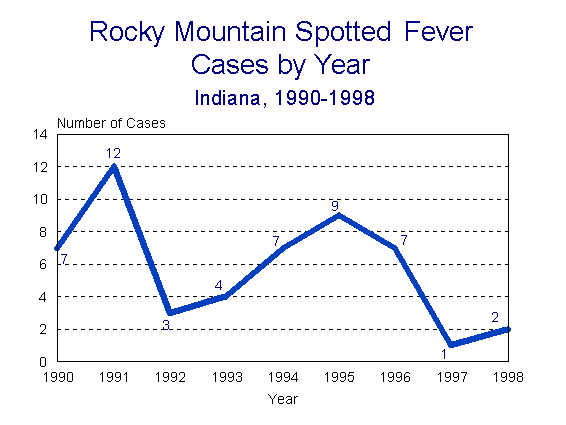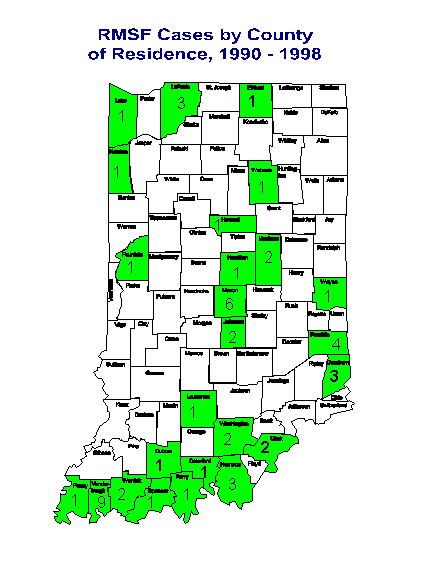
Rocky Mountain Spotted Fever
Cases
= 2Rocky Mountain Spotted Fever (RMSF) occurs sporadically and infrequently in Indiana. In the past nine years the number of cases have ranged from a low of 1 to a high of 12. Figure 1 illustrates the trend of case occurrence. Distribution of cases by county of residence is dispersed across the state with some tendency to regionalize in the very southern portion of the state. County of residence may not reflect where the disease exposure occurred as recreational exposure to infected ticks is common.
The disease is caused by the bacteria, Rickettsia rickettsii, and is transmitted by ticks. The principle vector is Dermacentor variabilis, which is a common tick in Indiana. The disease is characterized by sudden onset with fever, malaise, deep muscle pain, severe headache, chills and conjunctivitis. In approximately 50% of the cases a maculopapular rash appears on the extremities before spreading to the palms and soles. The rash rapidly spreads to the body. Petechiae and hemorrhage are common. In the absence of specific therapy, mortality may be as high as 25%. With prompt recognition and antibiotic therapy, death is uncommon. Diagnosis is confirmed by serological testing of acute and convalescent specimens. Single specimens may be confirmatory if taken after the first two weeks of illness.
There is not a vaccine available to prevent RMSF; therefore, prevention rest solely on avoidance of tick infested areas or personal hygiene efforts. Individuals who enter tick-infested areas for recreation or occupational reasons should wear protective clothing (long sleeves and pant legs), use repellents such as DEET, and check themselves thoroughly for ticks after leaving the tick habitat.
Figure 1.

Figure 2.

[an error occurred while processing this directive]